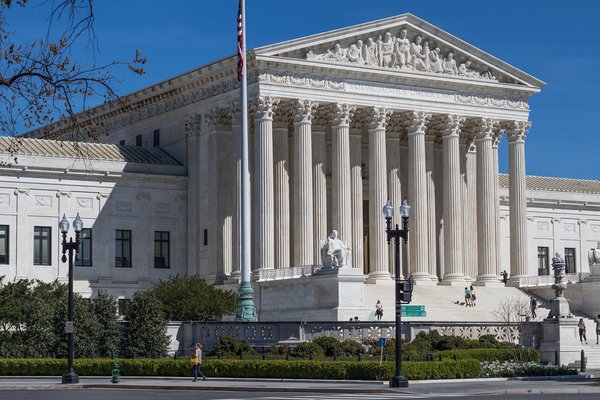U.S. Supreme Court Cites Restatements of Contracts, Restitution, Trusts

In a dissenting opinion delivered in Thole v. U.S. Bank N. A., No 17-1712 (June 1, 2020), U.S. Supreme Court Associate Justice Sonia Sotomayor relied on traditional common-law principles—including principles set forth in the Restatement of the Law, Contracts, the Restatement of the Law Third, Restitution and Unjust Enrichment, the Restatement of the Law Second, Trusts, and the Restatement of the Law Third, Trusts—in arguing that participants in a defined-benefit retirement plan, whose benefits were fixed regardless of the investment decisions of the plan’s fiduciaries, had Article III standing to bring suit to challenge the management of the plan even when they suffered no monetary injury.
In that case, two retirees who were vested participants in a defined-benefit retirement plan filed a putative class action against, among others, the plan trustee and plan sponsor, alleging that the defendants mismanaged the plan from 2007 to 2010 and breached their duties of loyalty and prudence under the Employee Retirement Income Security Act of 1974 (ERISA), and requesting, inter alia, that defendants repay the plan approximately $750 million in losses. The U.S. District Court for the District of Minnesota dismissed the action, and the U.S. Court of Appeals for the Eighth Circuit affirmed, holding that the plaintiffs lacked standing to bring the suit.
In a five-to-four decision, the U.S. Supreme Court affirmed the Eighth Circuit’s judgment “on the ground that the plaintiffs lacked Article III standing.” Writing for the Court, Associate Justice Brett M. Kavanaugh held that the plaintiffs had no concrete stake in the lawsuit, explaining, inter alia, that the plaintiffs “have received all of their monthly benefit payments so far, and the outcome of this suit would not affect their future benefit payments,” because if they “were to lose this lawsuit, they would still receive the exact same monthly benefits that they are already slated to receive.”
Dissenting, Associate Justice Sonia Sotomayor, joined by Associate Justices Ruth Bader Ginsburg, Stephen G. Breyer, and Elena Kagan, argued that there were “at least three independent reasons” that the plaintiffs alleged a concrete injury to support their standing to bring this action. First, the plaintiffs had an equitable interest in their retirement plan’s assets and established they had standing by alleging a $750 million injury to their interest in their retirement plan’s financial integrity. Justice Sotomayor argued that traditional trust law provided “ample support” for the fact that the plaintiffs had an equitable interest, because, as set forth in Restatement of the Law Second, Trusts § 74, Comment a, and §§ 199 and 205, trust beneficiaries had an equitable interest in the subject matter of the trust, which permitted them to maintain a lawsuit to “compel the trustee to redress a breach of trust,” among other things. Furthermore, as defined-benefit-plan beneficiaries, the plaintiffs had an interest in receiving their monthly pension benefits and thus had “an interest in the integrity of the assets from which those payments come.”
Second, the dissent argued the plaintiffs had standing “because a breach of fiduciary duty [was] a cognizable injury, regardless whether that breach caused financial harm or increased a risk of nonpayment.” In support of her argument, Justice Sotomayor reasoned that, under Restatement of the Law Second, Trusts § 199, a trust beneficiary could maintain a suit for a breach of fiduciary duty, and cited Restatement of the Law Third, Restitution and Unjust Enrichment § 1, Comment a, and § 3, Comment a, in pointing out that a beneficiary could bring a suit against a trustee for disgorgement or restitution, which recognized that the trustee’s wrongful gain was the relevant harm. The dissent further argued that, even if the plaintiffs’ rights did not sound in trust law, the plaintiffs would still have standing because, under the Court’s view that the “plan confer[red] a ‘contractua[l] entitle[ment],”’ “the plan also confer[red] contractual rights to loyal and prudent plan management,” and, in accordance with Restatement of the Law, Contracts § 328, a “‘breach of contract always create[d] a right of action,’ even when no financial ‘harm was caused.’”
Third, the dissent argued that the plaintiffs had standing to sue on the plan’s behalf. Justice Sotomayor stated that the common law, under Restatement of the Law Third, Trusts § 94, Comment d(1), permitted trust terms to confer upon others standing to bring suit against the trustee, and that “ERISA embrace[d] that tradition.” She reasoned that, even if the plaintiffs did not sustain any monetary injury, their pension plan did; and because ERISA legally assigned participants and beneficiaries the right to represent their plan when, like in this case, there was unquestionable cognizable harm to the plan, the plaintiffs should have been permitted to bring this suit on their plan’s behalf.
Read the full opinion here.
